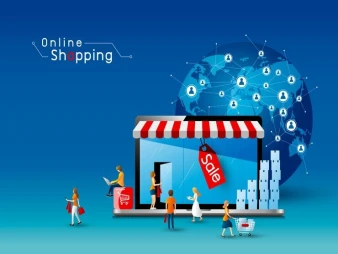Free support 24/7
Free support 24/7

The world of marketing is considered one of the most developed and changed fields in the modern era. With the increasing competition of companies and the intertwining of ways to reach the target audience, innovation has become essential to achieve exclusivity and distinction in the market. The ability to present a new and innovative idea that differs from the usual one enhances the chances of success of marketing campaigns and contributes to attracting attention and interest from the target audience.
Understanding Innovation in Marketing: Innovation in marketing campaigns is not just about introducing a new product or service. It includes renewing marketing ideas and processes in a way that distinguishes the company from its competitors. Innovation can include developing new marketing strategies, using innovative marketing techniques, and designing innovative advertising campaigns that uniquely express the brand's vision.
The importance of innovation in marketing campaigns:
Attention: The public lives in an age full of information and advertising. So, it becomes difficult for companies to stand out and attract attention. Through innovation, companies can create unique and exciting content that captures the audience's attention and motivates them to interact.
Brand building: Innovation contributes to building a strong and distinctive brand image. When the marketing campaign is characterized by innovation, the company has an identity that distinguishes it from others, and this enhances customer loyalty and engagement.
Increased sales: The impact of innovation usually reflects positively on sales. If a company can offer a unique and innovative product or service, it will have a competitive advantage that makes it the best choice in customers' minds.
How to achieve innovation in marketing campaigns:
Understanding the target audience: Innovation should be geared towards meeting the needs and wants of the target audience. Innovative ideas must be relevant and attractive to this audience.
Leveraging Technology: Technologies such as artificial intelligence, virtual reality, and augmented reality open new doors for innovation in marketing. These technologies can be used to create interactive and engaging customer experiences.
Collaboration and Creative Thinking: Collaboration within or even outside the team can be a source of innovative ideas. In addition, creative thinking should be encouraged among team members, and room for experimentation and bold experiments should be provided.
Benefit from previous experiences: Previous steps can be a process related to past experiences and lessons learned from them. What has been implemented in the past must be analyzed and successes and failures identified to be used in future innovation.
Section Two: The Role of Innovation in Achieving Uniqueness: In this section, the focus is on the positive impact of innovation in achieving uniqueness and distinction. The following points are reviewed:
Exceeding Monotony: Innovation helps overcome monotony and traditionalism in marketing campaigns. When a company exceeds public expectations through innovative ideas, it can stand out.
Creating Exceptional Experiences: Innovation can achieve unique and innovative experiences for customers. Whether it's through interactive apps, or virtual reality experiences, customers remember and connect with those moments.
Enhance engagement and engagement: Innovation motivates customers to engage and interact with marketing campaigns. Be it through social media challenges or innovative contests, innovation increases audience passion.
Section Three: Strategies for Achieving Innovation in Marketing: In this section, practical strategies for achieving innovation in marketing campaigns are presented. Some of the following points include:
Explore Unmet Needs: Companies can explore unmet needs in the market and work to meet them with innovative new products or services.
Encourage innovative thinking in the team: Team members should be encouraged to think innovatively and share their ideas without restriction. Encouraging dialogue and sharing ideas can open doors for innovation.
Monitor market trends: By observing market trends and understanding expected future changes, companies can consider developing new products or services that meet those needs.
Section Four: Successful Case Studies: In this section, some current studies are presented that highlight how to achieve innovation in marketing campaigns and achieve excellence. Real-world examples can be used to illustrate how innovative ideas can be applied successfully.
Section 5: Marketing Innovation Challenges We must also address the challenges that companies can face while trying to achieve innovation in marketing campaigns. Some of these challenges include:
Risk and Uncertainty: Innovative experiences may carry financial and auditory risks. It can be difficult to estimate how the public will respond to the new idea, and this can create uncertainty.
Limited resources: The resources available to the company may be limited, which can hinder the development and experimentation processes. Therefore, a balance must be struck between innovation and available resources.
Resistance to change: The team involved in the innovation process may face resistance from some members of the organization who prefer to continue with traditional methods and practices.
Section Six: Leveraging Technology in Innovation: Technology plays a crucial role in achieving innovation in marketing campaigns. Technologies such as data analytics, artificial intelligence, and communications technology enable companies to better understand customer needs and direct efforts more effectively.
Section Seven: Continuity of Innovation: Achieving innovation is not just a temporary goal, it must become part of the company's culture. The company must continue to encourage and fund innovative ideas and provide a supportive environment for innovation by encouraging creative thinking and continuous improvement.
Section Eight: Steps for Building a Marketing Innovation Strategy: To implement a successful innovative strategy in marketing campaigns, the following steps can be followed:
Define the goal: Determine what you want to achieve with innovation and what benefits it will provide to customers.
Information Gathering: Surveying customers' needs and expectations, examining your competitors and observing market trends.
Idea development: generating and evaluating innovative and appropriate ideas for the marketing campaign.
Choosing distinctive ideas: Choosing ideas that are in line with the vision and mission of the brand and stand out from competitors.
Implementation and Testing: Applying ideas and testing them on a small scale before implementing them fully.
Evaluate and improve: Evaluate innovation performance and learn from experience to improve it in the future.
Section Nine: The Impact of Innovation on Digital Marketing: In a world characterized by technology and social communication, digital marketing has become one of the most important means of marketing. Innovation in this context makes it possible to reach a wider audience and generate greater engagement. Innovation can be used to develop unique content, design innovative interactive experiences, and use new promotional strategies.
Section Ten: Facing Future Challenges: Innovation is not limited to the current time, but must be in line with market developments and changes in customer preferences. Companies must prepare for future challenges, such as rapid technological developments and changing social trends.
Section Eleven: Orienting Innovation towards Sustainability: It is important for innovation to be oriented towards environmental and social sustainability. Companies can achieve differentiation by offering products or services that improve the environment or meet the needs of society.
Section Twelve: Marketing Innovation Success Stories Success stories can be inspiring examples of how innovation can be achieved in marketing campaigns. From small companies to large corporations, there are many examples of how innovation can be used to excel and succeed.
Section 13: Ending to a New Beginning: In the dynamic world of marketing, innovation never ends. Companies must remain committed to constantly developing and implementing new ideas to maintain their market position and meet changing customer needs and expectations.
Concluding section: Implications of innovation for the future: As technology continues to evolve and communication methods change, innovation will have a significant impact on the future of marketing campaigns. Companies that build innovation and experiment with new ideas can achieve sustainable differentiation and exceed evolving audience expectations.
In this section, we present to you examples of companies that have created many marketing ideas for their products
Experience 1: Apple and Smart Device Marketing Innovation: Apple has consistently excelled by developing unique and innovative products such as the iPhone and iPad. Its marketing campaigns highlight product design and superior performance. In addition, Apple has invested in the customer experience through its retail stores, creating direct contact with the public and greater engagement.
Experience 2: Nike and Innovative Digital Marketing: Nike used innovative marketing strategies to communicate with customers. Launched the Nike+ Run Club campaign, which combined a dedicated sports app with an online community. This gathering enables customers to share their experiences, inspire each other, and build a close relationship with the brand.
Experience 3: The Disney Company and Experience Investing: The Disney Company is one of the companies that embodied the culture of innovation and the provision of distinctive experiences. It has developed theme parks and theme parks such as Disneyland, where unique and magical experiences are offered to families. Also, Disney has developed streaming platforms such as Disney+ to deliver exclusive and innovative content.
Experience 4: Zara company and quick response to trends: Zara is setting an example in using innovation to achieve its own distinction. Zara has been distinguished for its ability to respond quickly to current trends in the fashion world and to introduce new collections frequently. It also used advanced technology to improve production processes and provide a unique customer experience in its stores.
Experiment 5: Airbnb and Travel Experience Innovation: Airbnb has innovated by transforming how we experience travel. Provided a platform for short-stay rentals such as apartments and townhouses, allowing travelers a more personalized experience and connection with local cultures.
Experiment 6: Tesla and innovation in the automotive industry: Tesla's revolution in the automotive industry reflects the impact of innovation. It introduced advanced electric cars that combine performance and advanced technology, and invested in expanding the network of charging stations. It also caught the world's attention with self-driving models.
Experiment 7: The Coca-Cola Company and Sustainability of Innovation: Coca-Cola is an example of how innovation and sustainability can be balanced. Introduced new products such as soft drinks that are low in calories and sugar free. It has also taken action to improve its environmental and social guidance.
Experiment 8: Amazon and Innovating the Online Shopping Experience By expanding its reach and offering multiple services, Amazon has transformed how we shop online. Developed Amazon Prime that offers a comprehensive experience that includes fast delivery and diverse digital content.
Experiment 9: Uber and Transforming Transportation: Uber has innovated the transportation industry by introducing a platform for ordering taxis. It has contributed to changing the public transportation experience and improving passenger comfort.
Experience 10: Patagonia and Innovation in Social Marketing: Patagonia is innovative in social marketing by linking its products to environmental and social issues. She conducted awareness campaigns and fundraisers to support the preservation of the environment, which positively affected the audience's interaction with the brand.
Conclusion: These real-world experiments show how innovation can make marketing campaigns stand out. By using fresh and innovative ideas and continuous experimentation, companies can achieve market leadership and stimulate customer interaction.

Flash sales are not just a temporary marketing tool. They are a smart tool to quickly drive sales and increase engagement in your store

تعرف على الطريقة الذكية اللي تخليك تستفيد من تجارب عملاءك السابقين في تسويق منتجاتك الجديدة وزيادة المبيعات
You can create your store easily